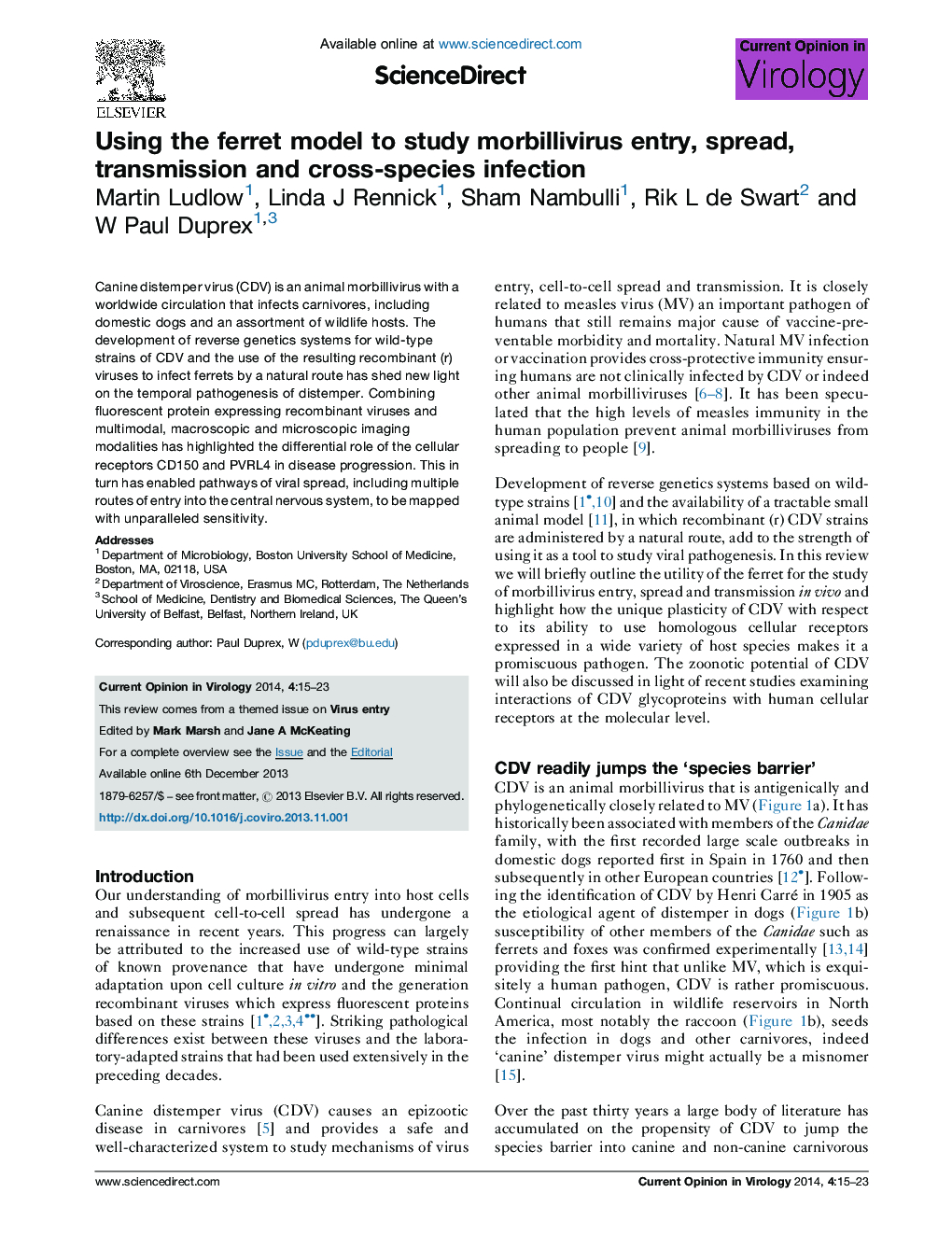| Article ID | Journal | Published Year | Pages | File Type |
|---|---|---|---|---|
| 5806723 | Current Opinion in Virology | 2014 | 9 Pages |
â¢Ferrets provide a traceable small model of disease for morbillivirus pathogenesis.â¢Canine distemper virus (CDV) is the most promiscuous of the morbilliviruses.â¢Molecular determinants governing CDV cross-species jumps are poorly characterized.â¢Morbilliviruses enter immune and epithelial cells via CD150 and PVRL4 respectively.â¢Conservation of pan-morbillivirus receptors likely aids infection of novel hosts.
Canine distemper virus (CDV) is an animal morbillivirus with a worldwide circulation that infects carnivores, including domestic dogs and an assortment of wildlife hosts. The development of reverse genetics systems for wild-type strains of CDV and the use of the resulting recombinant (r) viruses to infect ferrets by a natural route has shed new light on the temporal pathogenesis of distemper. Combining fluorescent protein expressing recombinant viruses and multimodal, macroscopic and microscopic imaging modalities has highlighted the differential role of the cellular receptors CD150 and PVRL4 in disease progression. This in turn has enabled pathways of viral spread, including multiple routes of entry into the central nervous system, to be mapped with unparalleled sensitivity.
